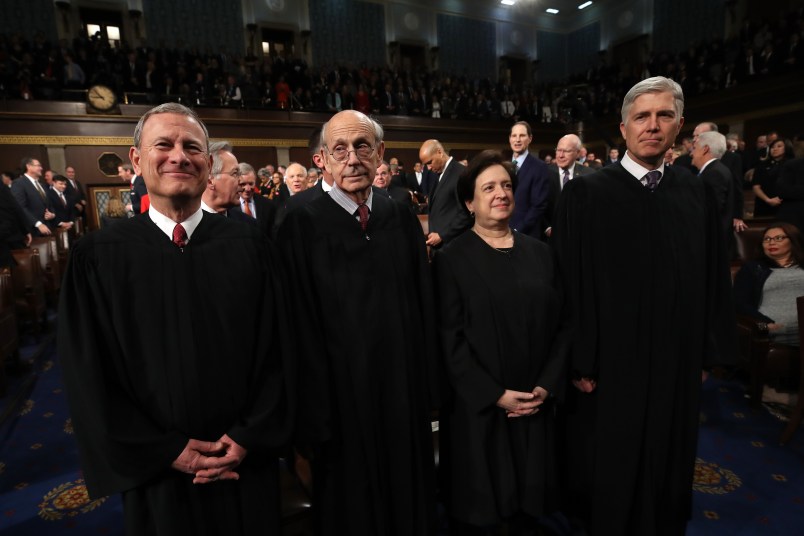The Supreme Court will let President Trump truncate the decennial census, putting on hold Monday a federal judge’s order that the count continue through the end of the month.
Justice Sonia Sotomayor is the only justice who noted her dissent, issuing with it a six-page dissenting opinion.
The legal fight over how and when the Trump administration winds down the pandemic census, has been one of several lawsuits filed challenging the way the White House appears to have hijacked the survey.
The challengers in this case have argued that by ending the survey’s data collections a month earlier than what was planned, the administration put the accuracy of the count’s data collection at risk. Census Bureau experts warned Commerce Secretary Wilbur Ross of the threat to census accuracy posed by expediting the final stages of the count.
Sotomayor in her dissent said that letting the administration implement the truncated counting timeline will cause “irreparable,” “avoidable and intolerable” harms that will be felt “for at least the next 10 years.”
In the case, the Trump administration is arguing that speeding up the Census Bureau’s counting plans was necessary because the bureau faces a statutory deadline of Dec. 31 to produce the data used to decide how many House seats each state gets, in a process known as apportionment.
The court’s majority did not opine on why it was allowing the count to end now. However, Sotomayor expressed her skepticism of the majority’s decision, arguing that “meeting the deadline at the expense of the accuracy of the census is not a cost worth paying”
Back in April, as the COVID-19 outbreak took hold, the administration asked that Congress postpone that deadline by four months to make up for the delays the pandemic was causing to the count. Administration support for that postponement disappeared sometime this summer, around the time that President Trump unveiled a new policy to removed undocumented immigrants from the apportionment count.
Many census observers, as well as officials within the bureau, believe that the White House’s reversal on giving the count more time was related to the apportionment policy, which is also being challenged in court.
Sotomayor herself hinted at the link by noting in her dissent that when Trump announced the policy, the “administration simultaneously stopped pushing Congress to extend the reporting deadline by 120 days.
Had the four-month extension been granted by Congress, apportionment would not happen until early April, meaning that a Biden administration — if Trump loses the election — could reverse the policy on undocumented immigrants. The administration’s gambit was thrown in jeopardy by U.S. District Judge Lucy Koh’s order last month that the count’s data collection phase continue until Oct. 31, which was the plan under the timeline released in April that had been adapted to the pandemic. Under the truncated plan developed in late July, it would end on Sept. 30? instead.
Initially, the administration tried to end data collection on Oct. 5 after the bureau advised Ross that that would be the drop-dead date for the administration to still meet the Dec. 31 apportionment deadline. But Koh said that was also in violation of her order and even discussed holding the administration in contempt, though she backed down from those plans.
The dispute was kicked to the Supreme Court after an appeals court let stand Koh’s order reinstating the Oct. 31 completion date for the counting operations.
Sotomayor knocked the administration for frequently changing its tune on when the Dec. 31 apportionment deadline would become impossible to meet.
She said the government’s shifting claims showed that the harms it would suffer under Koh’s order were “at best uncertain, and, more likely, nonexistent.”
“This is especially true given that, until recently, the Bureau sought an extension of the December 31 statutory deadline, and Congress had made significant progress toward granting it,” Sotomayor said. “The Bureau’s abrupt shift in focus from achieving an accurate count to meeting its deadline at all costs belies its newfound concern for issuing its report by December 31.”
Her dissent included a shot at her colleagues on the bench: “This Court normally does not grant extraordinary relief on such a painfully disproportionate balance of harms.







The proverbial handwriting is on the Wall…
Yep, the fix is in with the completely corrupted court.
Sort of puts a finer point on the charade going on with Amy Covid Barrett.
Not sure it matters. The whole census will need re-done anyway.
I got real tired of all the arguments about “That’ll never happen - Roberts won’t want to tarnish his reputation/reputation of the court” - whenever I was arguing that the fix was in, regarding ANY of tRumps shennanigans.
Bullshit.
Welcome to the Courts of Chaos.
Biden must balance this court - priority one. Everything else can wait if we get the senate. Otherwise, everything else is in jeopardy.